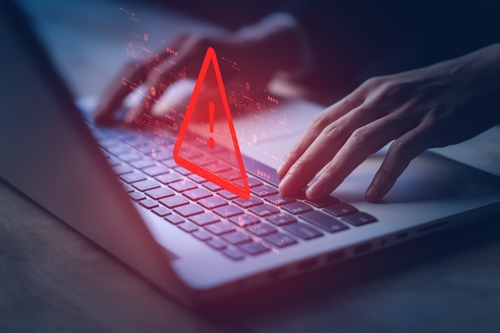It’s an understatement to say that the pandemic experience has changed the business—and workplace—landscape forever. The shift to remote and hybrid work is not temporary as business leaders once believed. It’s here to stay. With this shift comes risk—and an increased need to ensure both compliance and security when employees are “out of sight, and out of mind.”
How can businesses navigate this new terrain effectively?
Understanding the Risks
While the digital age and the ability to work remotely have offered businesses, and employees, a great deal of benefit, those benefits aren’t without associated risks.
These risks include security threats.
From phishing attacks, malware, unsecured networks, and more, dangers are lurking in the shadows of remote work. In addition to ensuring technical security, ensuring that every remote employee adheres to compliance guidelines can be a daunting task.
The stakes are high, and the risks are real. Understanding those risks, and taking steps to minimize or avoid them, is paramount.
Best Practices for Remote Work Security
Companies must be proactive to defend against potential security risks. This has always been true, but is even more critical when employees are working from a wide range of remote locations.
An important foundational step: establishing implementing Virtual Private Networks (VPNs) to ensure secure connections. Employees should not be able to access company networks or files without going through a VPN.
Of course, data and system protection doesn’t stop there. Organizations should also ensure that they are continually updating security patches and conducting regular software updates and audits to protect against vulnerabilities.
In addition, especially in a broadly remote work environment, multi-factor authentication is a must-do; employees may balk at the extra steps to gain access to information, but those steps are critical to ensuring security.
Finally, ongoing training and communication for employees needs to be part of any data security protection effort. Employees represent the first line of defense against security breaches.
Training Employees on Compliance
Security and data protection training isn’t, or shouldn’t be, a “one and done” effort. It’s important that communication and training to ensure employees understand their role in protecting company data and systems is ongoing.
For remote employees, this training should be adjusted to ensure that remote risks are also covered. For example, ensuring that information and data is not accessible to other family members, not using personal unsecured devices are used for work, etc.
Training can have maximum impact when real-world examples and scenarios are used. Your own security breaches can serve as powerful examples of where real risks have been detected and serve as conversations starters for how to avoid these risks in the future.
Monitoring and Auditing
Monitoring and auditing the potential for security risks is an ongoing imperative for businesses of all types and sizes—especially in remote and hybrid work environments.
Data and system detection software and monitoring tools can offer invaluable insights and protection against exposure and risk. But tools alone aren’t enough to protect systems and data.
Regular audits, conducted with a discerning eye, can ensure that security measures aren’t just in place, but are truly effective.
The world of remote work, while offering flexibility and freedom, also presents its own set of challenges—especially in terms of data security risks. By taking a proactive approach, grounded in best practices and continuous learning, organizations can help minimize risks while providing important learning and insights for employees on their role in helping to ensure compliance and security.
Lin Grensing-Pophal is a Contributing Editor at HR Daily Advisor.

